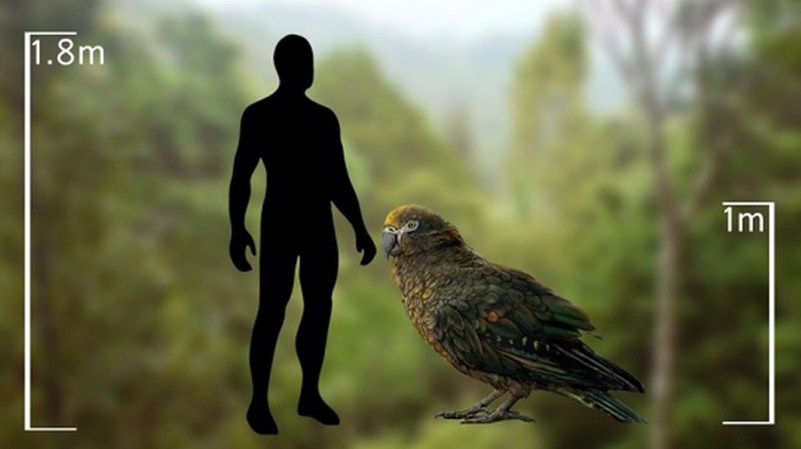GIANT PARROT DISCOVERED
Australasian palaeontologists have discovered the world’s largest parrot, standing up to 1m tall with a massive beak able to crack most food sources. The new bird has been named Heracles inexpectatus to reflect its Herculean myth-like size and strength — and the unexpected nature of the discovery.

CALIFORNIA SEA OTTER COMEBACK
The sea otter surrogacy program at the Monterey Bay Aquarium in which non-releasable females raise rescued pups for return to the wild, have helped make a comeback for the threatened sea otter population in California’s coastal estuaries. The growth of the sea otter population also brought many other benefits, like a vital habitat for fish species and eelgrass beds to recover. The aquarium plans to replicate this program along other ecosystems along the west coast.

WHITE RHINO ARTIFICIAL INSEMINATION
Veterinarians have successfully harvested eggs from the two remaining white rhino females who live in Kenya. This procedure has never been attempted in northern white rhinos before. The eggs will be artificially inseminated with frozen sperm from a northern white rhino bull, and later transferred to a southern white rhino surrogate mother. The successful harvesting of their eggs means that scientists are one step closer to being able to save the northern white rhino from complete extinction!

WE ALL NEED CORAL REEFS
Scientists say bolder actions to protect coral reefs from the effects of global warming will benefit all ecosystems, including those on land. Coral reefs cover only 0.5% of the ocean floor, but they support almost 30% of the world’s marine fish species. 400 million people depend on reefs for work, food and protection from waves, storms and floods.

RIVER DOLPHINS RETURN!
In the 1960s the Potomac River became overrun with algae, trash, human waste and pollutants. After almost 50 years of pollution control, clean-up and restoration efforts, researchers have catalogued well over 1,000 bottlenose dolphins living, mating, and even giving birth in the lower reaches of the river!

NEW SPECIES DISCOVERED
Caltech scientists have discovered a new species of worm thriving in the extreme environment of Mono Lake, a lake three times as salty as the ocean. This new species has three different sexes, can survive 500 times the lethal human dose of arsenic, and carries its young inside its body like a kangaroo.
HABITAT CORRIDORS BRING BACK BIODIVERSITY
By connecting small, restored patches of savanna to one another via habitat corridors in South Carolina, a nearly 20-year-long study has shown an annual increase in the number of plant species within fragments over time, and a drop in the number of species disappearing from them entirely. “Habitat fragmentation and loss is the number one driver of species extinctions in the U.S. and across the globe,” says Ellen Damschen, professor of integrative biology at the University of Wisconsin-Madison.




